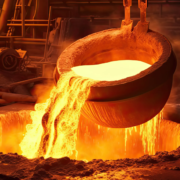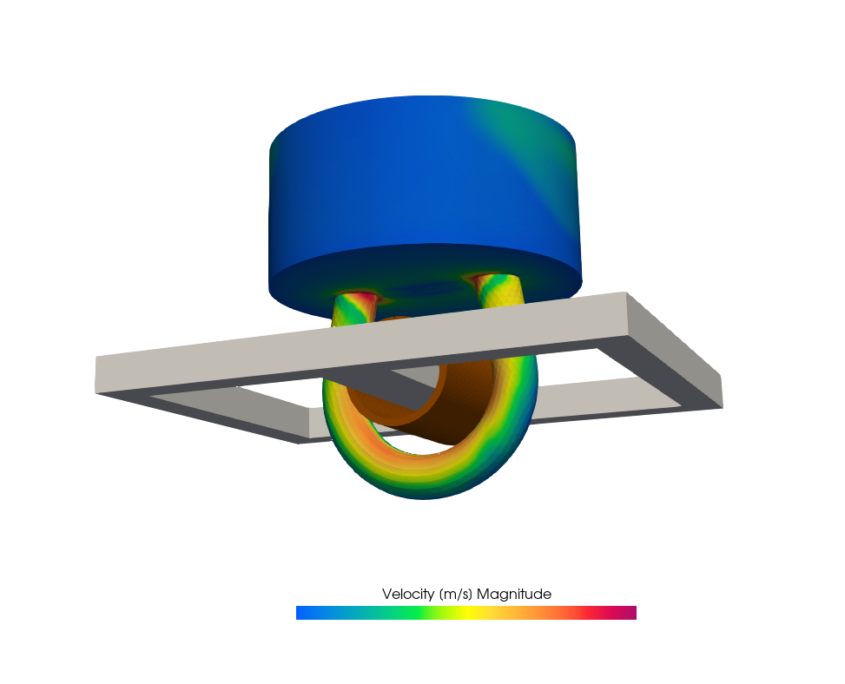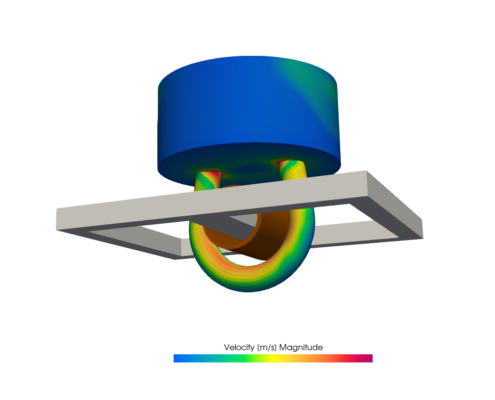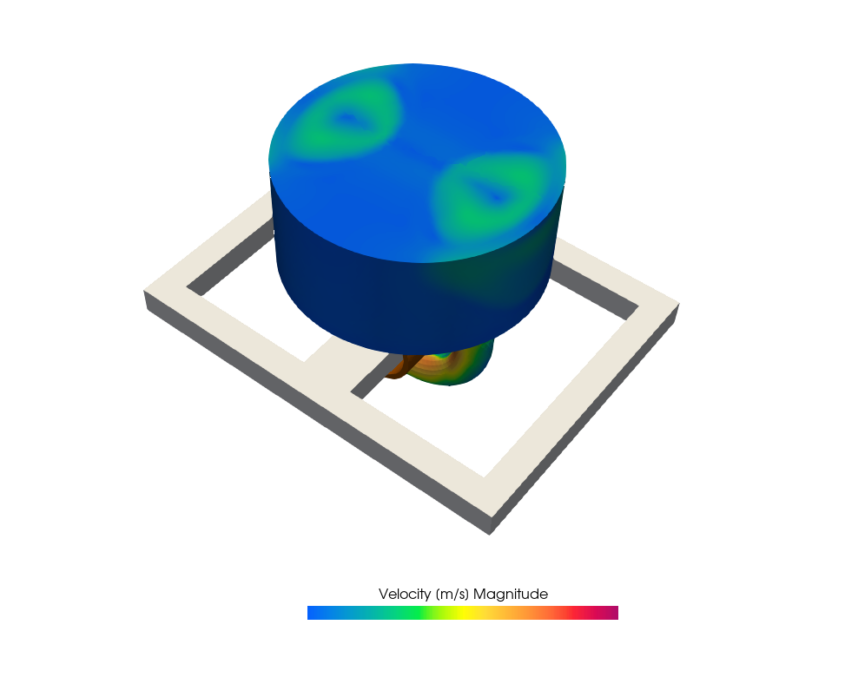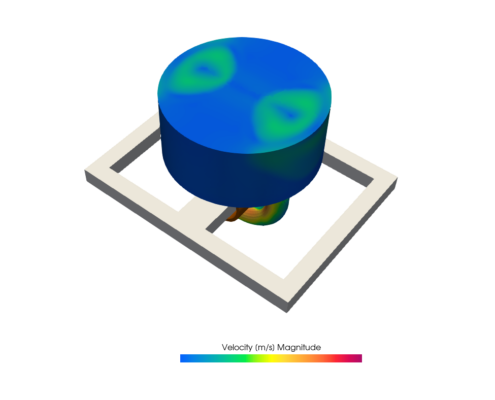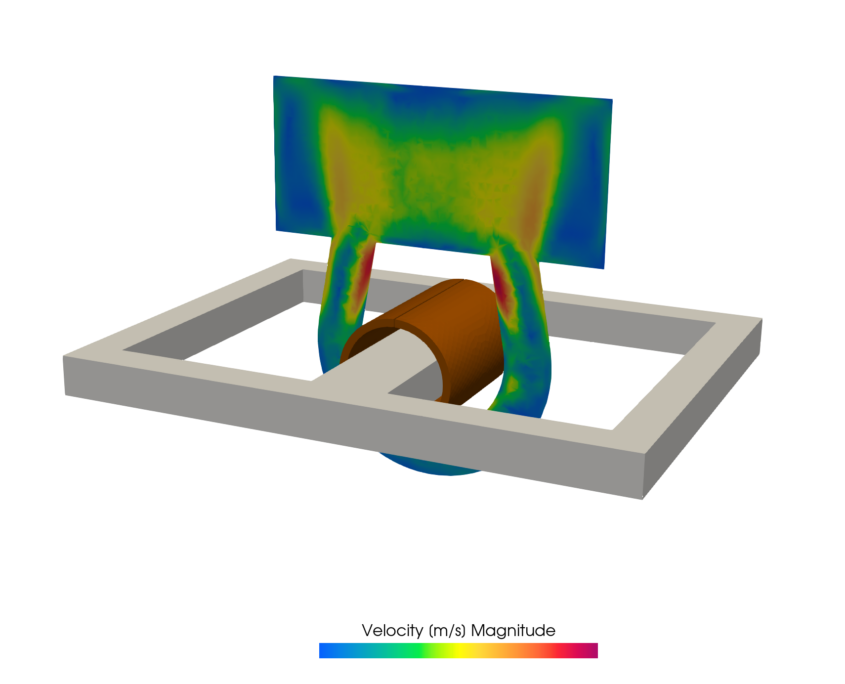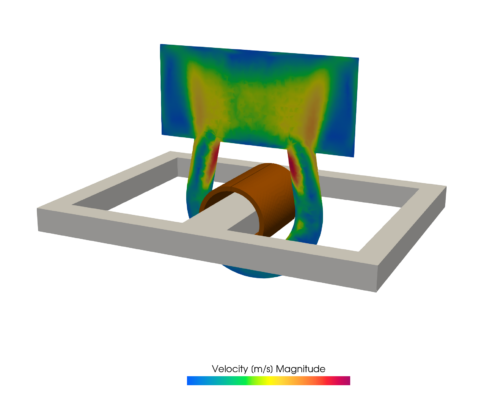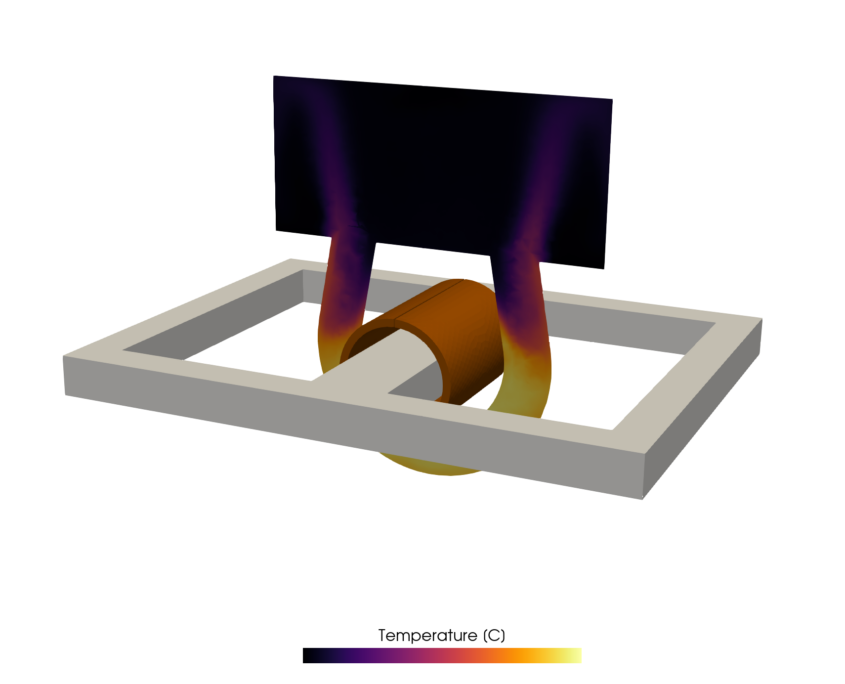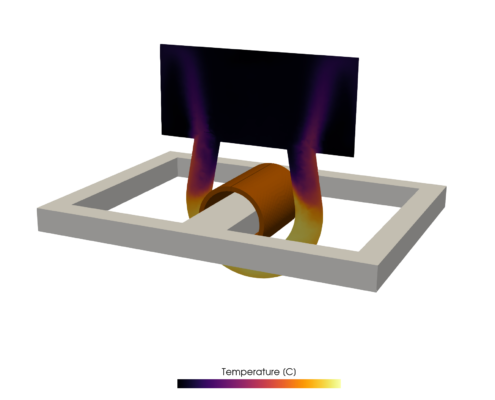Induction channel furnace: case study
In this case study, we will explore the challenges of electromagnetic melting and stirring of liquid metals in induction channel furnaces. We present a solution through advanced simulation and conclude with the critical results engineers can achieve using such simulation tools.
What is the challenge?
When dealing with industrial applications of induction channel furnaces for melting and stirring of metals, the most known challenges are the following:
- Uniform temperature distribution: Making sure that the liquid metal maintains a consistent temperature across the entire furnace is important for producing high-quality products and to keep the energy costs under control. Uneven temperature distribution can cause cold spots; cold spots can lead to local solidification; overheating in the majority of cases, results in higher energy consumption, as well as may lead to refractory erosion, leading to final product defects of excessive energy consumption.
- Efficient stirring and flow: Metals must be thoroughly mixed to avoid impurities or variations in composition. The electromagnetic fields used to stir the molten metal must generate the right flow patterns to ensure that the metal circulates efficiently.
- Heating and flow: For the induction channel furnace, heating and flow are generated in the channel. If there is not enough mixing, the bath above is still; there is no mixing there, and it stands to solidify from above. So, engineers look to produce enough stirring and heat in the channel to have sufficient movement and mixing in the bath as well.
- Energy optimization: High energy consumption is a concern for engineers when working with induction furnaces. Efficient heating and circulation help reduce energy usage while maintaining performance.
It is clear that it’s impossible to look inside the liquid metal container and understand how the liquid metal behaves. Without a clear understanding of how electromagnetic fields interact with the liquid metal, these challenges can lead to inefficient processes, higher costs, and inconsistent product quality.
What is the solution?
To deal with these challenges, engineers use simulations that model the behavior of molten metals in the induction channel furnaces under the influence of electromagnetic fields. These simulations provide a detailed look into how metals circulate, how heat is distributed, and where electromagnetic forces are most effective to drive the flow.
We created the following simulation to analyze the challenge.
Low-frequency induction channel furnace system simulation was done to evaluate system behavior with a specific furnace and coil geometry and applied frequency. Channel furnace with a 20 turn coil and ferromagnetic core was modeled.
Within the furnace, liquid aluminium was placed and electromagnetic stirring was initialized from molten aluminium state to analyze fluid dynamics, thermal distribution and mixing within the furnace. 50 Hz 20 kA current was used.
Numerical mesh was generated automatically, and then manually refined to capture in more detail aluminium behavior specifically in the channel part. In results a small temperature increase can be seen in the channel section of the furnace, which, coupled with the vortex-like aluminium flow created in the channel, distributes the heated aluminium in the rest of the furnace volume.
Insights of the simulation:
- Velocity and flow patterns: In the first image, a simulation of the induction channel furnace shows the velocity distribution of the molten metal. The color gradient (blue to red) reveals how fast the liquid is moving at different points in the furnace. The U-shaped channel at the bottom clearly shows that the liquid metal is being driven into a vortex by electromagnetic forces, ensuring constant movement and efficient mixing.
- Electromagnetic field interaction: In the second set of images, we see how the magnetic field interacts with the molten metal. The heat and flow velocity in the channel are illustrated in color, showing that electromagnetic forces are concentrated in the channel, driving a circular flow. This flow pattern prevents the liquid from settling and ensures that the metal is constantly moving, thereby reducing the risk of uneven heating or metal solidification.
- Heat distribution: The temperature distribution, highlights how the furnace maintains a consistent temperature. The black-and-yellow gradient demonstrates uniform heat throughout the liquid metal, a critical factor in keeping metal liquid in an energy-efficient way. Thus, the heat is generated just in the channel. There should be enough stirring to ensure the flow goes out to the bath and mix it properly. Nevertheless, too much stirring and high temperature can cause erosion of the refractory materials in the channel walls. The ability to control and predict temperature distribution enables engineers to design more energy-efficient furnaces that prevent overheating or underheating.
Velocity Field:

- The color scale on the image represents the velocity of the molten metal.
- The blue and green colors indicate slower flow regions, while the red/pink spots represent areas where the liquid metal is moving at higher velocities.
- The U-shaped path below the main body is the channel, where the molten metal circulates. This is typical in induction channel furnaces where the liquid metal is driven to move by electromagnetic forces.
- The distribution shows that the liquid metal flow is mostly steady but has some variations in velocity, which is critical for ensuring that the metal is continuously mixed and heated evenly.
Temperature Field:

- The image shows the temperature distribution in the liquid metal, with the temperature color scale.
- This image shows the uniform heating of the liquid metal. The very narrow temperature range indicates that the furnace is designed to maintain a very consistent temperature throughout the metal, preventing hot spots or cold zones.
- The black background with lighter areas indicates a steady heat distribution across the channel, suggesting that the furnace’s design is efficient at keeping the metal molten and stable.
These simulations help engineers visualize and improve furnace designs, optimizing the performance of electromagnetic stirring systems for different metals and applications.
What is the result and why is this simulation useful for engineers?
The result of this simulation is a detailed understanding of the electromagnetic melting and stirring processes in an induction channel furnace. Engineers can see how the liquid metal flows, where heat and electromagnetic forces are concentrated, and how different design choices impact energy efficiency and product quality.
Why is this simulation useful?
- Improved design for uniform heating: The simulations clearly show that uniform heat distribution is achievable by optimizing electromagnetic induction patterns. Engineers can fine-tune the inductor and channel designs to ensure no areas are left underheated or overexposed to the electromagnetic fields. This leads to better-quality castings, reduced waste, and improved overall product performance.
- Enhanced mixing and flow control: By visualizing the flow of liquid metal in real-time, engineers can determine how efficiently the metal is stirred within the furnace. This eliminates inconsistencies in the metal’s composition, ensuring homogeneity in the final product.
- Energy savings: The insights gained from these simulations allow engineers to optimize the furnace design for energy efficiency. Since the simulations provide a precise picture of where and how heat is distributed, the furnace can be adjusted to use only the energy required to achieve the desired temperatures, reducing operational costs.
- Predictive maintenance and troubleshooting: With a clear understanding of how the molten metal and electromagnetic fields interact, engineers can predict where potential failures might occur, such as areas prone to overheating or insufficient stirring. This predictive ability leads to better maintenance schedules and reduces the likelihood of costly downtime.

